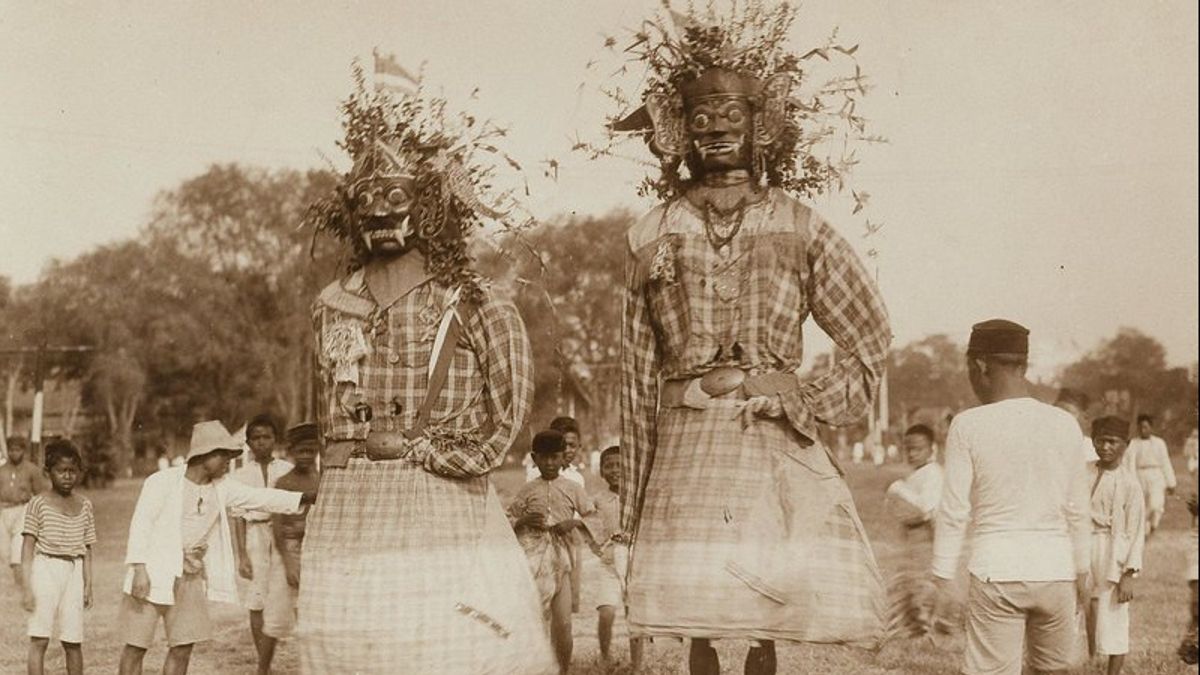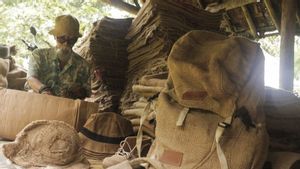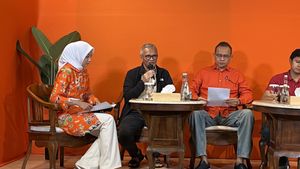JAKARTA - The diversity of dolls in the archipelago is second to none. The product of that imagination even existed long before Dutch colonialism came. For example, in Batavia (Jakarta). The agrarian structure of Betawi society is the origin of the bustle of the puppet fields. Not only that. Batavia also has an ancient sacred puppet art. Barongan name.
Barongan or better known as ondel-ondel, initially had a scary image. Repelling reinforcements is its main function. Therefore, ondel-ondel is considered like the spirit doll of the Betawi people.
The arrival of the Dutch to the archipelago brought closely its cultural features. They generally think that the culture of the bumiputras is far from progressing. In fact, the Dutch had suspected that none of the Bumiputra artists had come to make doll crafts.
The Dutch are happy to introduce the craft of dolls that resemble accurate representations of real human beings. The pride for the Dutch is like a pioneer. Agents of progress, he said. However, that view is unfounded.
Since time immemorial, arts that are similar to puppets have been perpetuated in the archipelago. Not only puppets, the ancestors of the bumiputras have made human forms in the form of inscriptions since centuries ago. The work was later recognized by the world as a work of high art. even in the form of simple puppets, the bumiputras in Batavia often placed puppets in the fields to protect the crops.
“There I noticed a strange building whose use was explained to me. Four bamboos are planted close to each other and farther up and farther apart, supporting a small hut 12 or 15 meters above the ground: steps cross step by step on one of the four bamboos that form the pillars of the building that serve as ladder. It is there when the rice is old, there is a guard, who is completely protected from tigers, leopards and snakes,” said painter Auguste de Molins as written by Bernard Dorleans in Orang Indonesia & Orang France (2006).

“And his job is to move the series of bamboo slats that are attached to the four corners of the roof and to make a sound that scares the birds who love rice. The simple stuffed rice fields move when a gentle breeze blows constantly in the area so that the bamboo blades rotate by the gust of wind making a sound similar to the hum of an organ pipe.”
The skills of the natives in making dolls are also shown in various events. One of them was when the Dutch and the natives seemed to work together to produce miniature dolls of people in the Dutch East Indies. From officials to commoners. The collection of 150 dolls was presented to the queen of the Netherlands in 1893.
The dolls are equipped with houses placed in modern children's rooms. The collection is then considered a masterpiece that emphasizes the diversity of Indonesia. including Aceh and North Sumatra. Everything seems to imply a meaning, if the bumiputras have been able to balance between ethics and aesthetics.
“As katalong also suggests, this collection is meant to present a complete picture of the indigenous people of the Indies. A large number of ethnic groups and social strata each have their own miniature clones. There were several hajis among the dolls, all dressed all in white. Their faces look haughty."
“There are also dolls depicting regionally different indigenous staffing hierarchies. All are carefully carved and clothed. A doll set from Preanger, East Java, for example, shows the duke, the highest-ranking indigenous official like royalty; raden ajoe adipati, wife of the duke; patih; orderlies; djoeroetoelis, up to 35 levels down in succession to the peasants and the njai tani,” said Rudolf Mrazek in his book Engineers of Happy Land (2006).
BaronganLong before the advent of modern dolls, the famous dolls in Betawi land were barongan. A timeless art called ondel-ondel is said to have existed since the 17th century. Ondel-ondel used to be widely known as the embodiment of village danyang (repellant calamities). It is also hailed as an intermediary puppet of the spirit.
Betawi culturalist Masykur Isnan agrees with this. According to him, in ancient times the giant doll was commonly used as a repellent against reinforcements. Ondel-ondel perpetuate to ward off disease outbreaks or other disturbances. Therefore, ondel-ondel is present as a form of endeavor. First, the effort to fight the epidemic. Second, efforts to fight crop failure.
That's why ondel-ondel comes in pairs. Ondel-ondel women are predicted as manifestations of Dewi Sri (Goddess of fertility). The Betawi people believe that the presence of female ondel-ondel can bring fertility to the fields so that the harvest does not fail. Meanwhile, male ondel-ondel is the embodiment of bad things. Therefore, male ondel-ondel is depicted with a scary red face.
"In the past, ondel ondel was depicted as a form of evil or ugliness which was depicted with a sinister and ugly appearance, red color and fangs became dominant, paraded around the village, then crushed as a symbol of the immediate disappearance of evil."
“In that context, ondel-ondel is said to be sacred. Over time, ondel-ondel also transforms as a form of fun or pleasure, the faces of ondel-ondel are composed in such a way as to be more witty and entertaining," said Masykur Isnan to VOI, January 3.

At that time, ondel-ondel could not be played arbitrarily. In ancient times, people who played ondel-ondel had to carry out special rituals. Enough of the name. Ngukup is a ritual of burning incense by ondel-ondel players. All done because ondel-ondel is considered to have sacred power.
In the Ngukup ritual, apart from incense, there are various other offerings. From red-and-white pulp to seven kinds of flowers. So that the purpose of playing ondel-ondel – whether harvesting smoothly or fighting the plague – is successful. Like what the Betawi people did in expelling cholera in Batavia in 1888. Ondel-ondel became a ritual practice to expel the cholera epidemic in Batavia which had claimed many lives.
“There are also (bumiputra) who hold mass rituals to ward off disease. In a Malay language newspaper published in 1888, there was news of village leaders holding a procession (ondel-ondel) through the area where the Indonesians were praying.”
"Meanwhile, among the Chinese there is a habit of calling the lion dance to go around Chinatown if there is a threat of a cholera outbreak because they believe that the devil who spreads cholera is afraid of the lion dance," wrote Susan Blackburn in the book Jakarta History 400 Years (2011).
*Read other information about HISTORY or read other interesting articles from Detha Arya Tifada.
Other MEMORIESThe English, Chinese, Japanese, Arabic, and French versions are automatically generated by the AI. So there may still be inaccuracies in translating, please always see Indonesian as our main language. (system supported by DigitalSiber.id)









